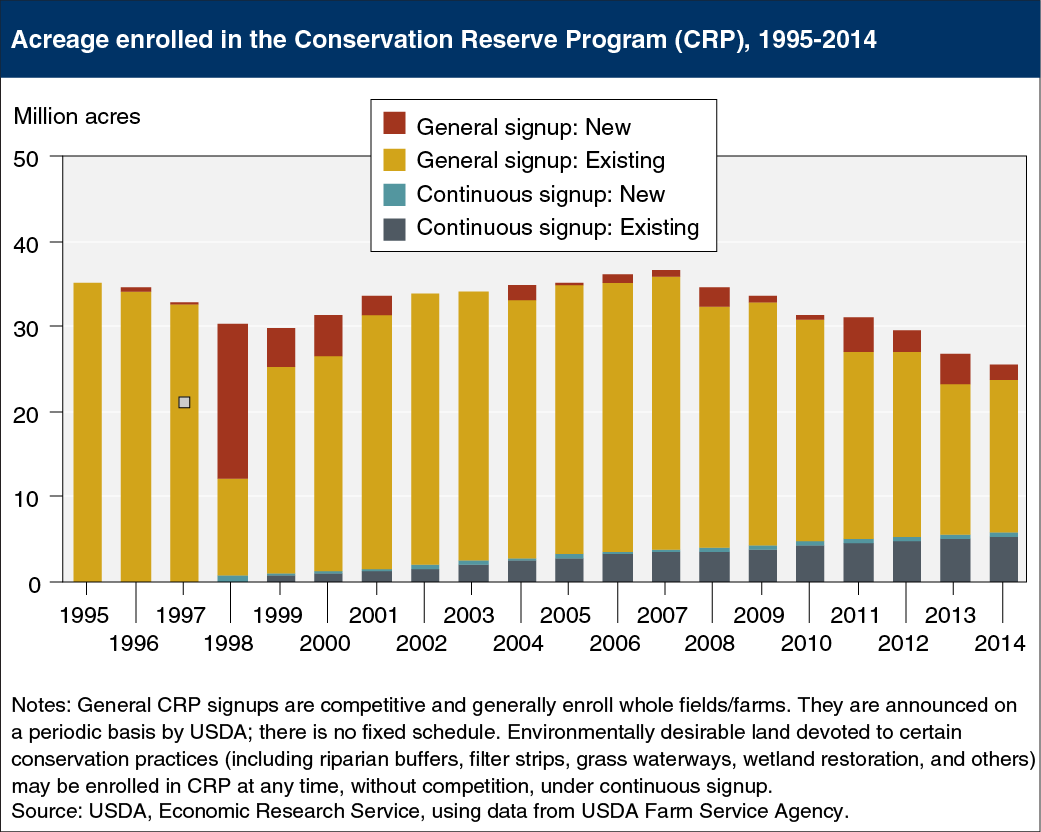While total acreage in the Conservation Reserve Program (CRP) continues to decline, land in "continuous signup" steadily increases
- by Daniel Hellerstein
- 6/25/2015

The Agricultural Act of 2014 gradually reduces the cap on land enrolled in the Conservation Reserve Program (CRP) from 32 million acres to 24 million acres by 2017. CRP acreage declined 34 percent since 2007, falling from 36.8 million acres to 24.2 million by April 2015. Environmental benefits may not be diminishing as quickly as the drop in enrolled acreage might suggest. While initially enrolling mainly whole fields or farms (through periodically announced general signups), CRP increasingly uses “continuous signup” (which has stricter eligibility requirements than general signup) to enroll high-priority parcels that often provide greater per-acre environmental benefits. Conservation practices on these acres include riparian buffers, filter strips, grassed waterways, and wetland restoration. Riparian buffers, for example, are vegetated areas that help shade and partially protect a stream from the impact of adjacent land uses by intercepting nutrients and other materials, and provide habitat and wildlife corridors. Enrollment under continuous signup increased by about 50 percent, from 3.8 million acres in 2007 to 5.7 million acres in 2014. A version of this chart is found on the ERS web page, Agricultural Act of 2014: Highlights and Implications (Conservation).


